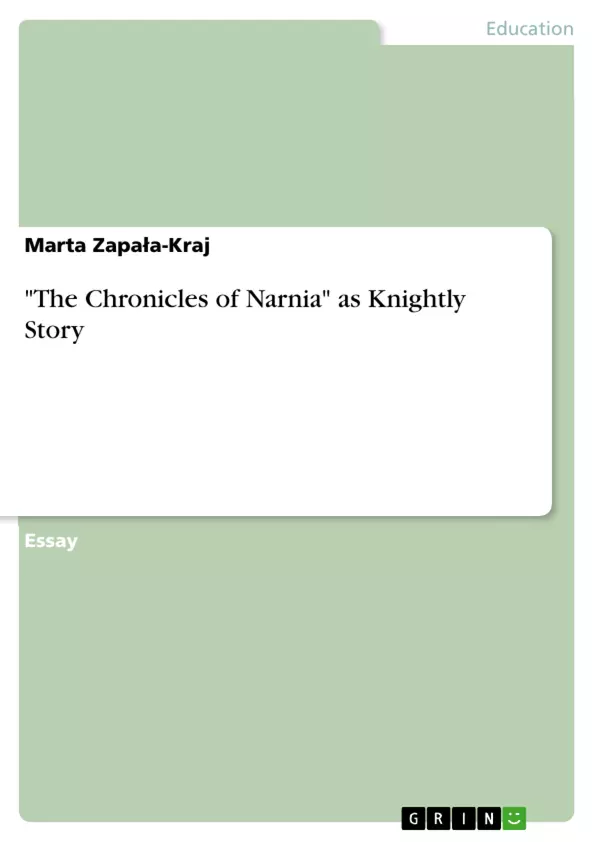In their texts, The Chronicles of Narnia, the novel is full of elements of myth. Some of the concepts in the novel are borrowed from Greek Mythology, like the fauns, centaur, dryads, and minotaur, while giants, dwarfs are from the Norse mythology. Also, elements of Christianity are also seen in the novel, such as Aslan the lion, often compared to Jesus Christ. Apart from these, one can trace the various archetypal images, so strongly linked with the one very particular type of the story – that of the quest.
Inhaltsverzeichnis (Table of Contents)
- Introduction
- Chapter 1: Knight on Errand
- 1.1. The explanation of term Holy Grail
- 1.2. The characteristics of knight and knighthood
- 1.3. The development of Arthurian Legend
- 1.3.1. The Pseudo-Historical, Romantic Arthur
- Chapter 2: Chronicles of Narnia as the Story of Archetypal Meaning
- 2.1 The Mythology of Narnia and the Knight of Grail embodied in Peter
- 2.2. Peter's Appearances' in The Chronicles of Narnia.
- Chapter 3: The Hero's Point of View
- 3.1. Peter the Leader, the Hero, the King..
- 3.2. Is Peter worth being a knight or Christian knight?..
- 3.3. Courtesy in spite of 'facts but not logic'
Zielsetzung und Themenschwerpunkte (Objectives and Key Themes)
This paper aims to provide a comprehensive introduction to the legend of the Holy Grail, with a particular focus on its portrayal in C.S. Lewis's "The Chronicles of Narnia." The paper analyzes the character of Peter as the knight of the Holy Grail, exploring his heroic qualities and examining his suitability for this role within the narrative.
- The origins and development of the Holy Grail legend
- The characteristics of an ideal knight and their relation to the Grail myth
- The mythological significance of Narnia and the representation of the Grail within the narrative
- The heroic qualities of Peter Pevensie and his role as the knight of the Holy Grail
- The analysis of Peter's character from various perspectives
Zusammenfassung der Kapitel (Chapter Summaries)
Chapter 1 lays the foundation for the paper by introducing the concept of the Holy Grail, tracing its historical and literary development. It also examines the characteristics of knighthood and its role within the Arthurian legend, setting the stage for the later analysis of Peter's character.
Chapter 2 delves into the world of Narnia, exploring its mythology and how it relates to the legend of the Holy Grail. It examines Peter's character as a manifestation of the Grail knight, analyzing his actions and interactions within the narrative.
Chapter 3 focuses on Peter's heroic qualities and his journey within the story. It explores his leadership, his actions as a hero, and his potential as a knight. The chapter also analyzes the question of whether Peter truly embodies the ideals of the Holy Grail knight.
Schlüsselwörter (Keywords)
Holy Grail, Arthurian legend, knighthood, C.S. Lewis, Chronicles of Narnia, Peter Pevensie, mythology, heroism, Christian knight, archetypal meaning, character analysis.
- Quote paper
- Marta Zapała-Kraj (Author), 2010, "The Chronicles of Narnia" as Knightly Story, Munich, GRIN Verlag, https://www.grin.com/document/288405



